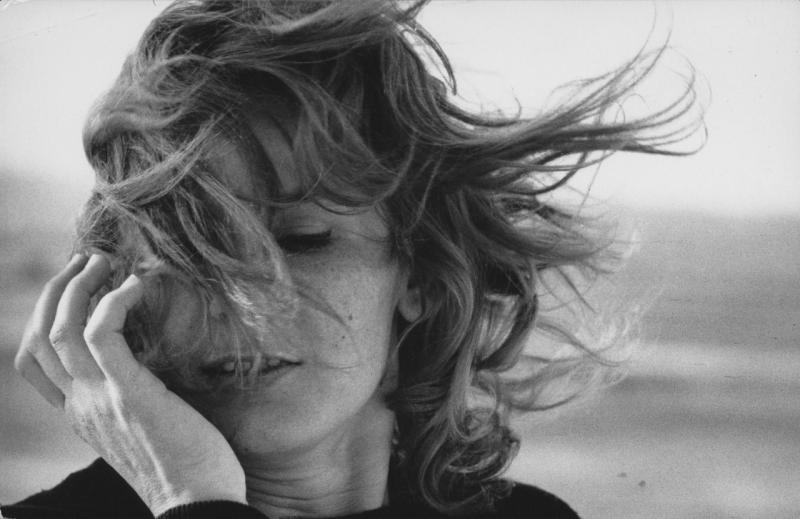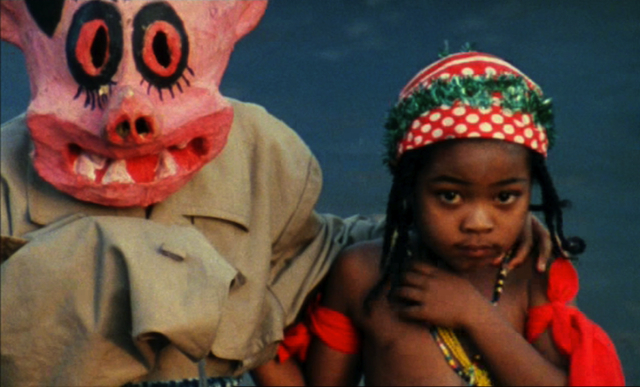Chris Marker: A Grin Without A Cat, Whitechapel Gallery | reviews, news & interviews
Chris Marker: A Grin Without A Cat, Whitechapel Gallery
Chris Marker: A Grin Without A Cat, Whitechapel Gallery
A survey of the influential French filmmaker proves a difficult introduction to his work

If you’re not already familiar with at least some aspects of Chris Marker’s work, this exhibition will feel overwhelming, if not confusing. You may have to pay a second visit to get the most out of it, or even make sense of it. It’s certainly a demanding retrospective of the influential French filmmaker, and an immersive "surround-screen" gallery survey probably isn’t the best introduction.
Still, I feel compelled to commend the ambitions of the Whitechapel Gallery in bringing Marker’s work to wider public attention and doing its best to highlight themes across a life’s work (“career” is a word Marker despised) which stretched over six decades and 60 films of varying length. Necessarily, the exhibition provides just a glimpse of his vast multimedia output.
She opens her eyes; she looks at us. That one arresting stare seems to still time
Born Christian François Bouche-Villeneuve, he initially began signing himself with the name Chris.Marker, but soon dropped the dot which, aptly given Marker’s later interest in the virtual reality website Second Life and his adoption of a cat as his avatar, would today make him sound like a curious software file. Two computer hubs are provided near the exhibition's entrance. Here you can click through Marker’s online meditations, arrived at by a kind of intellectually agile free-association, which invite us to explore his virtual museum with Guillame-en-Egypte, Marker’s avatar, as an occasional guide. You can spend time reading his thoughts on Hitchcock’s Vertigo, a film about memory and the futility of trying to recapture the past, and which had a profound influence on the younger filmmaker.
An inveterate traveller with an insatiable curiosity about world cultures and possessed of a desire to elude the media’s gaze, Marker once told a journalist he was born in Ulan Bator, Mongolia. In fact, Paris was the city of his birth and it remained his home until his death, aged 91, in 2012. And though he was an exponent of what came to be called the essay film, the term "essay" is not always a good fit, since two of his masterpieces are works of fiction. His most famous film, La Jetée, 1962, is a narrated story that, apart from one simple but arresting sequence, is told entirely through photographic stills (see main picture). With so many fragments of films, as well as photographs, including an excerpt from his globe-hopping ethnographic masterpiece Sans soleil, 1983 (still pictured above), there’s a sense of disorientating dislocation as one walks through the exhibition spaces. The half-hour long La Jetée plays on a loop on its own on the second floor, where you’ll also find his more overtly political works. These on-the-street and face-to-face encounters largely focus on Sixties Leftist activism – he was nothing if not a passionate chronicler of his times, and, with a homage to Castro in ¡Cuba Si! at the time of the Cuban Missile Crisis, naturally anti-American.
With so many fragments of films, as well as photographs, including an excerpt from his globe-hopping ethnographic masterpiece Sans soleil, 1983 (still pictured above), there’s a sense of disorientating dislocation as one walks through the exhibition spaces. The half-hour long La Jetée plays on a loop on its own on the second floor, where you’ll also find his more overtly political works. These on-the-street and face-to-face encounters largely focus on Sixties Leftist activism – he was nothing if not a passionate chronicler of his times, and, with a homage to Castro in ¡Cuba Si! at the time of the Cuban Missile Crisis, naturally anti-American.
La Jetée is a film apart, a haunting film that takes the form of a sci-fi story set in Paris after World War III (hugely influential, the film most famously inspired Terry Gilliam's 12 Monkeys). Civilisation has been destroyed and the few still alive exist in underground bunkers where they are experimented on by scientists looking for a way to breach time. That the sinister scientists whisper conspiratorially in German accents clearly plays on the audience's all-too recent memory of occupation, while nuclear apocalypse is more of a starkly imminent cold-war threat.
The film is essentially a love story, and this is where its power lies. The camera lingers on the face of the beautiful young woman who acts as both object and witness. She is not unobtainably beautiful, but possesses the kind of warm, fresh beauty that excites a comforting glow of nostalgia, edged with that abiding sense of something once graspable but always and forever lost. The only animated part of the film, or at least as we know it in its original, is the sequence that lovingly lingers on her face as she lies among white bed sheets. She opens her eyes; she looks at us. That one arresting stare seems to still time.
However, the Whitechapel has obtained an earlier print of the film with an alternative opening sequence: we see the protagonist running across the jetty at Orly airport. But why depart at all from Marker’s preferred version? The new opening scene surely breaks the spell of that one unexpected gesture – though when it does occur here the overhead light is too bright to really make it out clearly.
I regret that I can’t be more positive about this exhibition. The nature of the work does make it a very difficult survey to pull off, and co-curators Christine van Assche, of the Pompidou Centre, and film critic Chris Darke have largely tackled many of the predictable difficulties with imagination. Visitors will at least take away something of the sheer breadth of Marker’s interests, but it's worth remembering the Marker cinema screenings that are running concurrently (see links below).
Explore topics
Share this article
The future of Arts Journalism
You can stop theartsdesk.com closing!
We urgently need financing to survive. Our fundraising drive has thus far raised £49,000 but we need to reach £100,000 or we will be forced to close. Please contribute here: https://gofund.me/c3f6033d
And if you can forward this information to anyone who might assist, we’d be grateful.

Subscribe to theartsdesk.com
Thank you for continuing to read our work on theartsdesk.com. For unlimited access to every article in its entirety, including our archive of more than 15,000 pieces, we're asking for £5 per month or £40 per year. We feel it's a very good deal, and hope you do too.
To take a subscription now simply click here.
And if you're looking for that extra gift for a friend or family member, why not treat them to a theartsdesk.com gift subscription?
more Visual arts
 'We are bowled over!' Thank you for your messages of love and support
Much-appreciated words of commendation from readers and the cultural community
'We are bowled over!' Thank you for your messages of love and support
Much-appreciated words of commendation from readers and the cultural community
 Lee Miller, Tate Britain review - an extraordinary career that remains an enigma
Fashion photographer, artist or war reporter; will the real Lee Miller please step forward?
Lee Miller, Tate Britain review - an extraordinary career that remains an enigma
Fashion photographer, artist or war reporter; will the real Lee Miller please step forward?
 Kerry James Marshall: The Histories, Royal Academy review - a triumphant celebration of blackness
Room after room of glorious paintings
Kerry James Marshall: The Histories, Royal Academy review - a triumphant celebration of blackness
Room after room of glorious paintings
 Folkestone Triennial 2025 - landscape, seascape, art lovers' escape
Locally rooted festival brings home many but not all global concerns
Folkestone Triennial 2025 - landscape, seascape, art lovers' escape
Locally rooted festival brings home many but not all global concerns
 Sir Brian Clarke (1953-2025) - a personal tribute
Remembering an artist with a gift for the transcendent
Sir Brian Clarke (1953-2025) - a personal tribute
Remembering an artist with a gift for the transcendent
 Emily Kam Kngwarray, Tate Modern review - glimpses of another world
Pictures that are an affirmation of belonging
Emily Kam Kngwarray, Tate Modern review - glimpses of another world
Pictures that are an affirmation of belonging
 Kiefer / Van Gogh, Royal Academy review - a pairing of opposites
Small scale intensity meets large scale melodrama
Kiefer / Van Gogh, Royal Academy review - a pairing of opposites
Small scale intensity meets large scale melodrama
 Jenny Saville: The Anatomy of Painting, National Portrait Gallery review - a protégé losing her way
A brilliant painter in search of a worthwhile subject
Jenny Saville: The Anatomy of Painting, National Portrait Gallery review - a protégé losing her way
A brilliant painter in search of a worthwhile subject
 Abstract Erotic, Courtauld Gallery review - sculpture that is sensuous, funny and subversive
Testing the boundaries of good taste, and winning
Abstract Erotic, Courtauld Gallery review - sculpture that is sensuous, funny and subversive
Testing the boundaries of good taste, and winning
 Edward Burra, Tate Britain review - watercolour made mainstream
Social satire with a nasty bite
Edward Burra, Tate Britain review - watercolour made mainstream
Social satire with a nasty bite
 Ithell Colquhoun, Tate Britain review - revelations of a weird and wonderful world
Emanations from the unconscious
Ithell Colquhoun, Tate Britain review - revelations of a weird and wonderful world
Emanations from the unconscious
 Rachel Jones: Gated Canyons, Dulwich Picture Gallery review - teeth with a real bite
Mouths have never looked so good
Rachel Jones: Gated Canyons, Dulwich Picture Gallery review - teeth with a real bite
Mouths have never looked so good

Add comment